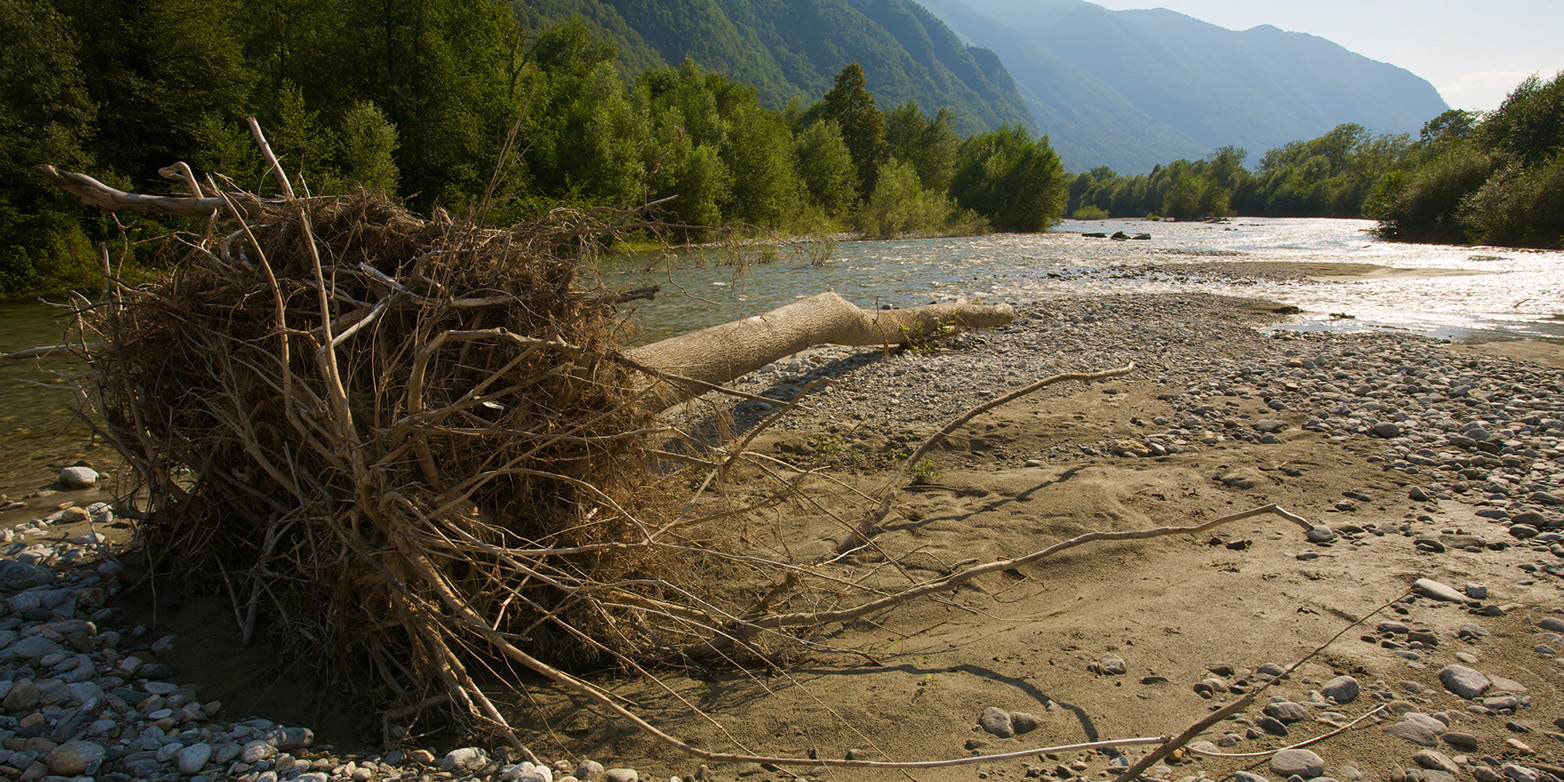Interdisciplinary research on rivers
Restoration and nature conservation projects have the great potential to restore and maintain important functions of our watercourses for future generations. Researchers from four research institutes of the ETH Domain, in collaboration with the Federal Office for the Environment (FOEN), have investigated how sediment transport and connectivity affect flood safety and river ecology. They have now compiled the scientific results from the research project for a broad audience.

From very wet to very dry – near-natural riverscapes form a diverse mosaic of habitats inhabited by an above-average number of species. Just as diverse are the interests that come together in our densely used landscape during hydraulic engineering interventions such as flood protection or restoration projects. The interdisciplinary research project “Riverscape – Sediment Dynamics and Connectivity” as part of the research programme “Hydraulic Engineering and Ecology” therefore combines engineering and ecological perspectives in the study of diverse riverscapes.
Within the framework of the project, 13 subprojects were realized, four of them at the Laboratory of Hydraulics (VAW) of the ETH Zurich, which is represented in the national project board by Dr. David Vetsch. The subprojects for which VAW has been responsible are briefly presented below.
Identification and quantification of habitats
Riverscapes are composed of a variety of landforms, which host different habitats for terrestrial, aquatic and amphibian species. A habitat results from particular physical and biotic factors and represents a suitable location that supports the establishment, survival and reproduction of species. One of the 13 subprojects studied the prediction of suitable habitats for the German tamarisk (Myricaria germanica), a species typical of riparian gravel bars and an indicator for near-natural river reaches. In doing so, researchers from VAW and WSL linked a large-scale ecological statistical model with a two-dimensional deterministic hydrodynamic model.
The identification and quantification of habitats is crucial for the management of riverscapes. The amount and variety of habitat are linked to the biodiversity and ecological resilience of a given environment. Habitat analysis has practical applications for river managers, for example for evaluating the consequences of changes in environmental conditions, such as the hydrological regime (e.g. natural floods) or climate variables (e.g. temperature increase), on target plant or animal species.
Flood protection for riverine organisms
In another sub-project, researchers from the VAW of ETH Zurich and Eawag investigated how a specific type of restoration project – dynamic river widening – develops with a reduced supply of bedload. In many rivers in Switzerland, barriers or bank protection structures reduce the input of bedload. What does this mean for the organisms in the watercourses, especially during floods? Riverine organisms are dependent on refugia such as backwaters or side channels to protect themselves from the raging floods. In the joint studies, the researchers found that bedload supply plays a decisive role in determining the extent to which river widening can improve the supply of refugia and thus protect biodiversity.
The response of the river
Lateral diversion structures in rivers are common measures used to divert parts of the discharge during flood events. The lateral overflow reduces discharge and thus bedload transport capacity in the main channel, resulting in sediment deposition. Researchers from VAW studied the interactions between lateral discharge and changes in bed level by numerical 1D and 2D modelling using the software BASEMENT and prepared recommendations for practical model applications.
Fine sediment deposition on floodplains
Rivers extend beyond the channels that are typically associated with this word. Of particular interest are floodplains, where important hydro- and morphodynamic processes occur. Recurrent flooding of floodplains may create specific habitat conditions that support the establishment of many species in need of conservation – processes which are relevant for river restoration projects. Researchers from VAW of ETH Zurich and the Platform of Hydraulic Constructions (PL-LCH) of EPFL investigated the hydro-morphodynamic processes of fine sediment deposition on floodplains. The main findings were implemented in the simulation tool BASEMENT to forecast fluvial responses due to flood events.
Reaching out to different stakeholders

The results of the research project “Riverscape” have now been prepared in several products for a broad audience. A external page volume in the “Environmental Studies” (Umwelt-Wissen) series published by FOEN clearly summarises the most important research findings of the 13 sub-projects. These are supplemented with contributions on implementation from experts in the field. An external page information flyer for a broad readership and the website external page www.rivermanagement.ch with an interactive map allow easy access to the diverse topics. Five external page short films complete the programme and illustrate the dynamic processes in watercourses.
It was important for the researchers to reach all people involved in water management. In particular, stakeholders without a specific professional background, for example in smaller municipalities, are not necessarily interested in the latest research details. Instead, they require an evaluation of the facts as well as an awareness of the key processes that need to be protected.
The interdisciplinary research programme
The research programme "Hydraulic Engineering and Ecology" develops scientific bases for current practical issues in watercourse management. Ecologists and hydraulic engineers from the four research institutions VAW ETH Zurich, Eawag, PL-LCH EPFL and WSL as well as the Federal Office for the Environment are participating in the research programme. Practitioners from the federal government, cantons, private offices, NGOs and associations support and advise the research work. The diverse collaborations enable a holistic view of our watercourses as biodiversity hotspots and flood retention areas.
Contact
V. Wasserbau, Hydrologie u. Glaz.
Hönggerbergring 26
8093
Zürich
Switzerland


